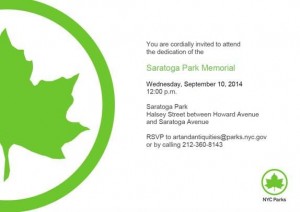LT. SAMUEL J. REID (A BEDSTUY HERO)
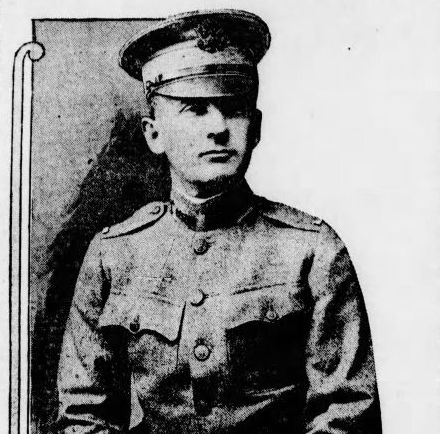
Brownstone Detectives investigates the history of our clients’ homes.
The story you are about to read was composed from research conducted in the course of one of those investigations.
Do you know the history of YOUR house?
********************************************************************************************************************************

In 2014, The Brownstone Detectives partnered with the New York City Parks Department to help celebrate the lives of the servicemembers of Bedford-Stuyvesant Heights who made the ultimate sacrifice during the Great War.
We researched these heroes to locate pictures, stories, and their descendants to be brought together for a ceremony that dedicated a new “Victory and Peace” war memorial at Saratoga Park.
This biography tells the story of one of those servicemembers.
LT. SAMUEL JACKSON REID
“Today I have lost the best pal I ever had.”
So began the diary entry of Lt. Samuel Jackson Reid’s orderly for 22 August 1918.
Such words might have been more understandable describing lifetimes friends or companions, but this touching and heartfelt line was written by a man who had known his commanding officer for a mere few months.
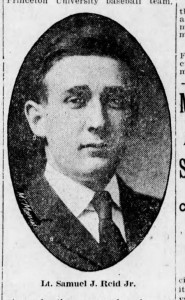 But Reid was not only a beloved officer in his field artillery battery; he was also popular with the entire regiment, according to Reid’s first sergeant, who explained this to the Brooklyn Daily Eagle after Reid’s death.
But Reid was not only a beloved officer in his field artillery battery; he was also popular with the entire regiment, according to Reid’s first sergeant, who explained this to the Brooklyn Daily Eagle after Reid’s death.
“Sam, by never having driven the men when it was unnecessary, by his consideration and personal regard for them and by his immediate demonstration of himself as a man of fighting spirit, a lover of justice and of man-to-man democracy, won the men to a devotion they were ready to express to the utmost.”
Although Reid had been above the draft age, he could have sat the war out in relative comfort back home and let other, younger men fight this war. But his conscience would not allow it. He dropped his law practice and entered the first officer’s training camp in 1917.
Then, when his background could have easily earned him a behind-the-lines position with the American Expeditionary Forces, Reid insisted on training himself for a fighting branch of the service, the field artillery. As such, he was commissioned a first lieutenant and assigned to the 306th Field Artillery.
“I couldn’t do it,” Reid said, explaining his refusal of a position with the Judge Advocate department. “I must be in a fighting branch. I would rather be a private in a fighting unit than a major with a non-combatant commission.”
THE NIGHT OF 22 AUGUST 1918
Reid was the first man in his battery to be killed. He died trying to help one of his men during a heavy bombardment of his position. When the soldier was hit in an adjoining dugout to Reid’s, he yelled out, “Lieutenant Reid!”
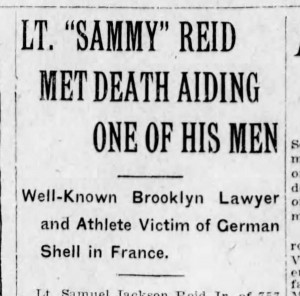
That was all Reid needed to hear.
He immediately stepped out of the commanding officer’s dugout, where he had been sheltered, running into the open some 50 yards to the man, who was slightly wounded. As he began to make his way back to his telephone in the dugout, though, he was caught in a “terrible fire midway.”
Reid, at this point, made a “flying dive – an old baseball slide” into an open ditch. Although it was only a foot and a half deep, it provided some protection. After fifteen minutes of shelling, the bombardment ended.
Going out to find their lieutenant, they found him dead. He had been killed instantly.
His men buried him on the spot, and all that day and the next they worked in the dangerous fire erecting a small cross in his memory.”
It read:
Reid died on 22 August 1918 in the “active front on the Vesle.”
BACK HOME
The news came to his parents not through the official casualty list, but through a fellow officer, Lt. William Armstrong, who had returned to the city from the front.
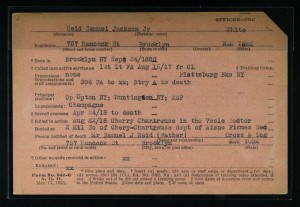
Reid, who lived at 757 Hancock Street before he left for the war, was called “one of the most popular athletic stars Brooklyn ever had and one of the most popular men ever graduated from Princeton University.”
He had gone to Boys High School, graduated from Princeton University, and then studied law at the New York Law School.
After graduating from law school, Reid became an Assistant United States District Attorney, then referee in bankruptcy, and a member of the law firm Morgan, Carr & Baiter of 60 Wall Street.
As an assistant D.A., he handled such cases as those dealing with “counterfeiters, bankruptcies, and white slavers,” all of which “felt his active hand against them.” Then when Woodrow Wilson was elected, “all the Republicans in the District Attorney’s office in Brooklyn resigned with the single exception of Reid, who was retained by the incoming District Attorney as this chief assistant.”
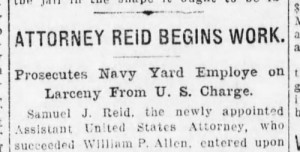
With the American Expeditionary Forces, Reid’s standards were held equally as high, and he earned not only a name for himself as a leader of men, but he inspired everyone he led.
“Sam’s was not a red tape character. He joyously violated rules whenever rules stood in the way of truth, right, and the things he was fighting for. He was a law-abiding citizen at that, but he could never be stopped on an important job by niceties or pettifogging. He cut everything else aside and went to the main point.”
Samuel Jackson Reid is buried in Cypress Hills Cemetery. He was 34 at the time of death.
(To learn about the history of the “Victory & Peace” memorial, click HERE.)
———————————————————————————————————————–
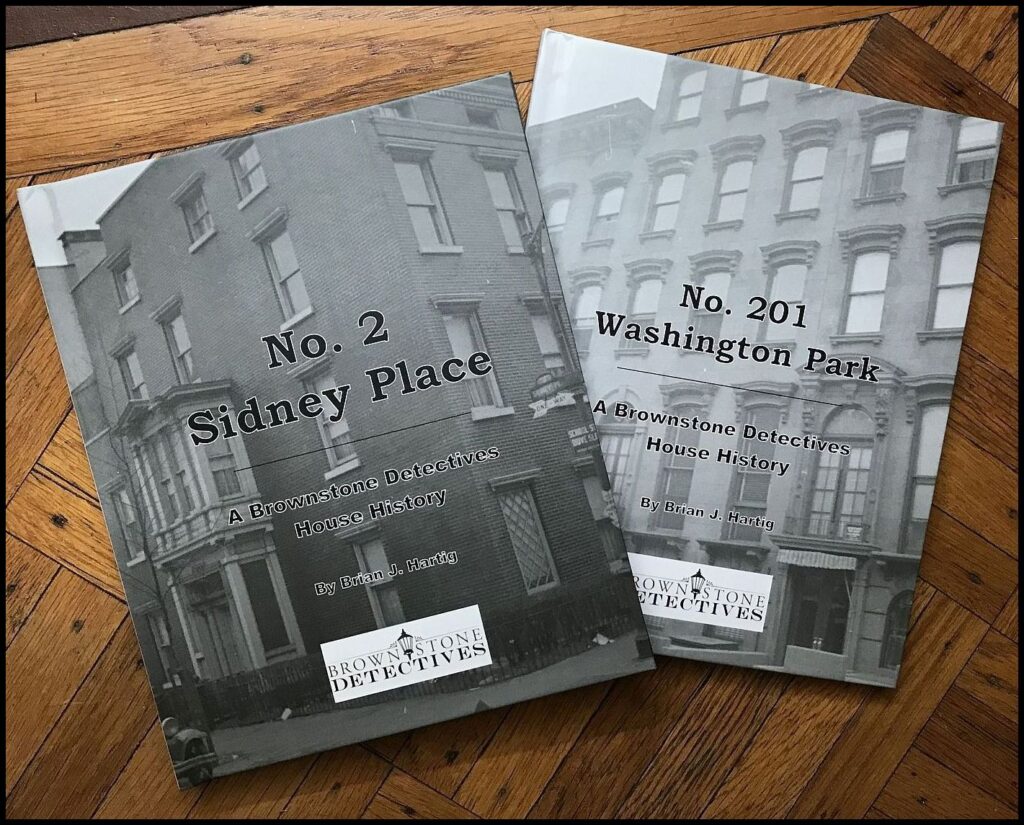 Brownstone Detectives is an historic property research agency. Our mission is to document and save the histories of our clients’ homes. From our research, we produce our celebrated House History Books and House History Reports. Contact us today to begin discovering the history of your home.
Brownstone Detectives is an historic property research agency. Our mission is to document and save the histories of our clients’ homes. From our research, we produce our celebrated House History Books and House History Reports. Contact us today to begin discovering the history of your home.
